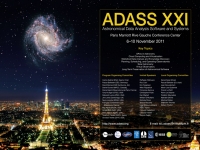Christophe Arviset (ESA-ESAC), Séverin Gaudet (NRC/HIA/CADC)
and the IVOA Technical Coordination Group
Abstract
Astronomy produces large amounts of data of many kinds, coming from various sources: science space missions, ground based telescopes, theoretical models, compilation of results, etc. These data and associated processing services are made available via the Internet by “providers”, usually large data centres or smaller teams. The “consumers”, be they individual researchers, research teams or computer systems, access these services to do their science. However, inter-connection amongst all these services and between providers and consumers is usually not trivial.
The Virtual Observatory (VO) is the necessary “middle layer” framework enabling interoperability between all these providers and consumers in a seamless and transparent manner. Like the web which enables end users and machines to access transparently documents and services wherever and however they are stored, the VO enables the astronomy community to access data and service resources wherever and however they are provided.
Over the last decade, the International Virtual Observatory Alliance (IVOA) has been defining various standards to build the VO technical framework for the providers to share their data and services (“Sharing”), and to allow users to find (“Finding”) these resources, to get them (“Getting”) and to use them (“Using”). To enable these functionalities, the definition of some core astronomically-oriented standards (“VO Core”) has also been necessary.
This paper will present the official and current IVOA Architecture[1], describing the various building blocks of the VO framework and their relation to all existing and in-progress IVOA standards. Additionally, it will show examples of these standards in action, connecting VO “consumers” to VO “providers”.
[1] http://www.ivoa.net/Documents/Notes/IVOAArchitecture/20101123/
Slides in PDF format
Paper ID: O03
|

